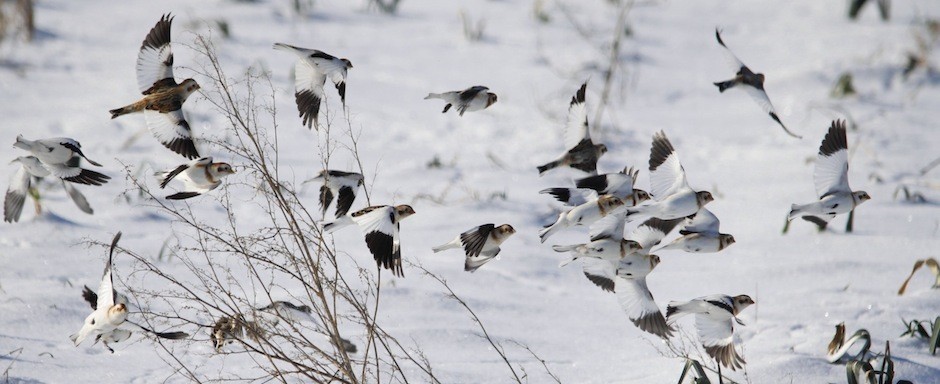One of the primary reasons to band birds is to discover where they go. With small passerines (perching birds) you have to band a LOT of them if you hope to get any results. The Western Hemisphere is a big place and the death of a small bird most of the time will go unnoticed. In fact the recovery rate for small birds is well below 1%. The bird that we get the most information on is the American Goldfinch but we have had to band multiple thousands of them to get that information. Despite millions of bands having been applied over the years by many banders, there is still very little known about the travels of our birds. New technologies are already starting to impact this – they are able to make geolocators small enough now for thrush-sized birds to carry them. But it will be awhile before they’re small enough for warblers and sparrows. And even then, you still have to recapture the bird.
In Europe they have had a lot more success at getting information from banding. Many more recoveries of banded birds have been made over the years. I attribute this in some measure to the many small-scale banding operations that go on – the more people there are catching birds, the more likely you are to recover a banded bird. Many of the operations are little more than people trapping and banding (there it is called “ringing”) in their backyards or in the local park or pnature preserve. This isn’t done willy-nilly: the banders are highly trained. But banding/ringing is more common it seems in Europe. And they’re better for it.
My son put up a couple of feeders a few weeks ago and they have been busy with all this snow and cold temperatures. I decided to bring a couple of traps home from Ruthven to see what I would get. It’s kind of a nice leisurely way to band: sit around, drink tea, read a book, glanee out the kitchen window every now and again to see if the traps have got anything. If so, bring the birds into the kitchen and do the workup on the kitchen table.
Over the course of the day I caught 25 birds. In keeping with yesterday’s blog, 18 of them were American Tree Sparrows. I also got 1 European Starling, 1 Common Grackle, and 4 Mourning Doves. The 25th bird was quite interesting: a Dark-eyed Junco, a banded Dark-eyed Junco. I recognized the band number as one of Ruthven’s (Ruthven is 7 km away as the junco flies). This bird was banded in early November at Ruthven and wan’t recaptured there. We’ve had juncos around our place all Winter and I wouldn’t be surprised if it wasn’t one of them. It was a young bird, that is, it was hatched last Summer. When young birds come south they’re genetically preprogrammed to get to a certain latitude. Once there they have to move around until they can find a spot where they can settle in – there’s a lot of competition at times for good wintering sites just as there is for breeding sites. Once a bird has found its niche and survived there, there’s a very good chance it will return to the same spot the next year – we’ve seen this time and again at Ruthven with juncos and tree sparrows. A successful bird will usually be able to defend its site the next time around.
Rick



